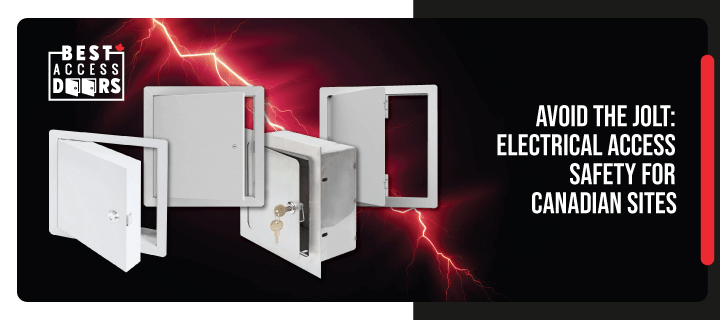Drywall for Access Panels - A Guide for Contractors Posted by Best Access Doors Canada on 3rd Nov 2020
A Guide to Installing Drywall Access Panels
During construction, planning wisely to avoid errors will save you time and money. Making sure to install something as simple as an access door correctly can make your building more accessible and prevent future problems.
Installing a Drywall Access Panel the Right Way
There are certain areas of a commercial building that are best for installing drywall access panels. Since you're installing it while the building is still under construction, you can locate where the plumbing or electrical components are, making it much easier to install correctly without any errors.
Before installing, you need to take some surface measurements. Otherwise, you will end up with small open crevices or spaces. Once you've taken the exact measures, you are ready to cut the hole and correctly install the access panel.
The building owner may want to add or upgrade the plumbing or electrical components in another area where there's drywall blocking the way. You can do the same process again. The tricky part is figuring out where the wires and pipes are since there's a drywall surface blocking your view.
Different Types of Access Panels
Now that you know where to install drywall access panels, the next thing you need is to understand what the several types of access panels are. Some have more basic uses, while others have more specific functionality in mind.
- Picture Frame Panel
- Plastic Panel If you want an access panel that's affordable and relatively simple to install, the plastic panel is the way to go. It contains a flush plastic door encircled by a 25m frame. It operates the same way as the picture frame panel. You can remove the door using a pin hinge and open the panel with a screwdriver.
- Beaded Frame Panel Instead of a flat frame, the beaded frame panel has beaded edges—the plaster sticks to the beaded texture throughout the door. This feature is perfect for concealing the frame, and only the door is exposed.
- Fire Rated Access Panel For a fire-rated wall, you can use a fire-rated access panel made of reinforced steel, which is insulated to reduce heat in a fire. These panels accommodate dual-layered, fire-rated gypsum boards. The fire-rated gypsum board helps maintain the wall's fire-resistant qualities while providing access to the components.
- Security Access Panel If you're in a building where security is a top priority, the security access panel made from strong reinforced steel ensures optimum protection. You don't need the security access panel if it's only providing access to electrical and plumbing components. It would be best to know how maintenance personnel will use your access panels.
A picture frame panel is a common type of access door that fits into any existing wall. You can use this type of access panel if you need quick and easy access to plumbing or electrical components behind drywall.
Steps to Installing Access Panels
After choosing the right access panel to install, you need to ensure that you install it correctly.
- Plan Where to Install the Access Panel
- Trace the Panel Frame Once you set up the drywall and marked it, you should trace the frame of the panel. It's as easy as holding up the panel on the drywall surface and trace the lines around the edges of the frame until you finish it.
- Cut a Hole in the Drywall After you finish tracing the drywall, the next step is to cut out the hole. You have the drywall saw to cut the outline you traced. When cutting the spot, you should note that it should at least be slightly larger than the access panel to make sure it has a good fit. It's best to cut no more than ¼ of an inch on each side of the line you traced. If you cut on top of the lines, the panel may not fit.
- Make the Panel Fit Now that you finished cutting the hole, slowly insert the access panel until it fits securely in the opening. You don't need to fret if the hole you cut is too small because you can just cut it a little bigger. Just make sure you don't cut too much; you'll have a large hole that doesn't fit your access panel.
- Secure the Panel After ensuring the panel fits snuggly, you need to secure it by running a bead of glue with a caulking gun along the frame's surface. Ensure you spread the glue evenly so that no excess adhesive spreads on the drywall surface's outer parts. Slowly insert the frame onto the hole and firmly press it against the drywall. It would be best if you pushed every side to distribute the glue evenly. You can also use tape on the top of the frame while the glue is drying. And when the glue on the frame dries, you can attach the door.
The very first step is determining the location of electrical and plumbing components behind the wall. It would be best to have the access panel's exact measurements to ensure it fits snuggly onto the surface. Not taking any measures will make it harder for you to install the access panel easily.
Here at Best Access Doors Canada we make sure the products we provide are high-quality, just like the articles on our blog where you can learn tips and get great information about the commercial construction industry.






